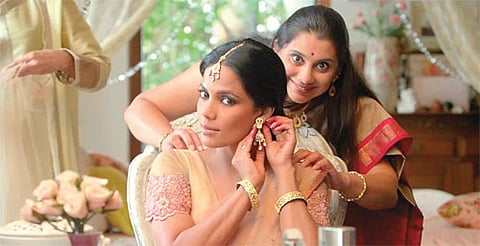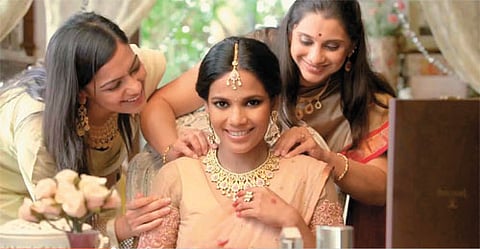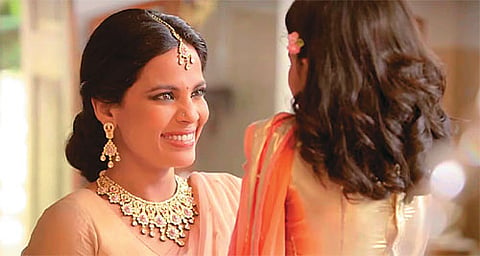Three decades on, television audiences still recollect the Nirma washing powder ad. The premise of the first ad was simple: doing the laundry, an important responsibility for homemakers, should not be a chore but enjoyable activity. Keeping with the premise, the women in the advert wore the whitest of clothes and so did their families. Yesteryear model and film actress Sangeeta Bijlani provided the glamour quotient. The messaging was unpretentious: Nirma is an essential aid for the quintessential Indian homemaker; if her family’s clothes are white, bright and clean, her world is perfect. That was all that defined a woman then.
Indian woman in TV advertising
Gone are the days when face cream was about the transformation of a shy ordinary looking girl to a pretty babe
Cut to circa 2015. In the most recent Nirma ad, four women help to pull out an ambulance stuck in a ditch while the men hesitate to help lest they soil their clothes. The messaging is implicit: Nirma is a useful aid for the 21st century Indian women who walk shoulder to shoulder with men. Between being a homemaker, a professional and a responsible citizen, she juggles multiple roles with ease; Nirma only adds to her efficiency in the form of a reliable cleaning agent.

Nimra’s Hema, Rekha, Jaya and Sushma of the 1980s were docile homemakers, content with doing the laundry and picnicking with their families in ultra-clean clothes. Their 21st century avatars, however, are confident women who will not let the fear of dirtying their clothes stop them from doing the right thing. Nirma’s positioning from the 1980s to 2015 has evolved to match the wavelength and thought processes of the 21st century Indian women.
The paradox that is characteristic of Indian women
According to experts, India will become the fifth largest consumer market by 2025 and women will be the most important decisionmakers in the consumer segment. To find a place in her lifestyle and that of her family, brands will have to advertise in a manner that appeals to her sensibilities and outlook. However, the paradox that defines the Indian woman is a challenge that stumps most brands.
To elucidate, while docile homemakers still exist in the largest cities, confident young women exist in the tiniest village hamlets. For every successful woman corporate leader who fearlessly drives value for the organisation’s stakeholders, there is a woman who lives in constant fear of domestic violence. For every woman whose income is greater than that of her husband, you will find a highly qualified woman who willingly spends the rest of her life in the kitchen toiling away for the rest of her family. All these women are equal participants in the consumer economy and cumulatively represent the India’s female psyche.
Some brands do leverage the paradox…
While it is unviable to charm to all categories of consumers simultaneously, brands ought to appeal to the emotions of their target audience. A good example is the Google ad in which the granddaughter undertakes a mission to reunite her grandfather with his childhood friend in Pakistan. Although a gender agnostic concept, I applaud the fact that the creators chose a female protagonist and her empowerment by technology. The message that technology empowers everyone equally is reinforced even more powerfully because of a female lead in the context of patriarchal societies like India and Pakistan.
The Tanishq ad in which a single mother remarries with a full celebration of the Indian rituals is another example. As a woman, I find it very gratifying that unlike in the past, a single mother is not a pariah any more. I congratulate the marketing team and the management at Tanishq for their bold decision to present their brand in the context of issues that may still be taboo, in certain sections of society.
While a few are trapped in the prison of stereotypes
However, not all brands celebrate the empowerment of the modern woman. For instance, I find that a large number of male-centric products objectify women even today, like ads promoting fragrances for men are prime examples of reinforcing stereotypes.
Another instance is of mainline ads of financial services which mostly show men as decision makers. Though they portray a fact symptomatic of our society; not many Indian women play an active role in investment decisions that influence the brand choice for financial services. Thankfully, the trend is changing and, here, I hope that there is enough impetus for Indian women to start taking part actively in financial decisions of the family.


Tradition empowered with modernity sums today’s Indian woman
No matter how hard we try, Indian women will always be associated with the traditional roles of a mother, homemaker, wife and daughter. Not surprisingly, most FMCG companies’ portray the primary problems of women being their struggle to scrub a vessel clean or to get their family to eat healthy food. Nevertheless, here again, I jubilantly note a change in the outlook.
Fair & Lovely ads have always drawn controversy because they portrayed fairness as a desirable quality in Indian women. In their most recent ad, however, in which the daughter refuses to marry until she has established her own identity and is ‘equal-equal’ with her partner, she uses the cosmetic not to look good for her future husband but to enhance her self-confidence. Gone are the days when the cream was all about the transformation of the shy ordinary looking girl next door to the pretty babe in the neighbourhood (‘woh pados wali ladki’). The evolution in the positioning a beauty product— from being an aid to attract male attention to becoming a tool for asserting one’s identity—is clearly a sign of things to come.
Moreover, there is a definite shift in using the girl-child as protagonist for products that were earlier associated with boys. For instance, my earliest childhood memories are that of a young Ayesha Takia holding up a mug of Complan with a timid proclamation of, “I am a Complan girl” while a bashful Shahid Kapoor, playing the role of her brother, confidently asserts, “I am a Complan boy.” Compare this attitude with the recent Bournvita advertorial where a child boxer successfully wins a match and when the helmet is removed, I exclaimed to myself, “It’s a girl!”
Harbingers of a progressive society
Advertisements are a reflection of our society. It is indeed heartening to note that they are gradually moving towards representing an egalitarian set-up by consciously dodging stereotypical gender roles and steadily blurring boundaries of gender discrimination. However, a truly progressive society is one when all media, including sitcoms, reality shows and films, depict the Indian woman’s empowered avatar as equal to her male counterpars and we have still some way to go before we reach that stage. Barack Obama, in reply to an Oscar winner, tweeted this on February 23rd, “When women succeed, America succeeds”. I voice the same sentiments for India and Indian women.